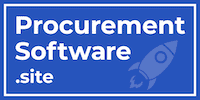In the fast-paced realm of Software as a Service (SaaS), consolidation proves to be a strategic game-changer, offering innovation pathways and substantial cost-saving avenues for businesses.
Salesforce's Bold Step: Acquiring Slack
Salesforce, a CRM giant, propelled itself ahead by acquiring Slack for $27.7 billion. This move not only enriched Salesforce’s product suite but also strategically positioned Slack against competitors like Microsoft Teams. The integration of Slack’s capabilities spared Salesforce from costly in-house development, leading to significant cost savings.
InvestCloud's Financial Expansion: Acquiring Advicent Solutions
In the financial services sector, InvestCloud’s acquisition of Advicent Solutions broadened its service portfolio. This strategic move not only expanded offerings but also brought about economies of scale, resulting in substantial cost efficiencies.
HelpSystems Fortifies Cybersecurity: The Agari Acquisition
HelpSystems, an IT management software provider, strengthened its cybersecurity capabilities by acquiring Agari, a cybersecurity specialist. This consolidation allowed HelpSystems to benefit from Agari’s expertise, steering clear of the high costs associated with in-house development.
Industry-Wide Consolidation Trends
The consolidation wave isn’t confined to specific sectors. It’s a trend sweeping across industries:
- Panasonic’s Tech Boost: Panasonic acquired Blue Yonder, enhancing its digital fulfillment platform.
- Francisco Partners’ Strategic Move: Acquiring Boomi expanded its cloud-based integration platform.
- Bill.com’s Financial Streamlining: Divvy’s acquisition simplified back-office financial operations.
- Mastercard’s Identity Verification Leap: Ekata’s acquisition strengthened Mastercard’s identity verification services.
Driving Forces Behind SaaS Consolidation
Consolidation isn’t merely about size; it’s a strategic move to:
- Enhance Offerings: Companies consolidate to enrich their product offerings and provide more comprehensive services.
- Wider Audience Reach: By joining forces, businesses tap into broader markets and reach a wider audience.
- Competitive Edge: Staying competitive in the dynamic SaaS market requires strategic consolidation to quickly adapt to market dynamics.
- Cost Savings: Sharing resources and eliminating duplicate efforts lead to substantial cost savings.
2024 Outlook: A Surge in Consolidations
As we enter 2024, the trend of consolidation within the SaaS market is set to surge. Interestingly, these consolidations may not just be between larger and smaller players but between companies that complement each other, fostering mutual benefits.
Conclusion: Reshaping the SaaS Landscape
In conclusion, consolidation is reshaping the SaaS industry. Beyond adapting to market dynamics and meeting customer expectations, it stands out as a key strategy for businesses to gain a competitive edge and achieve significant cost savings in the fiercely competitive SaaS market.








